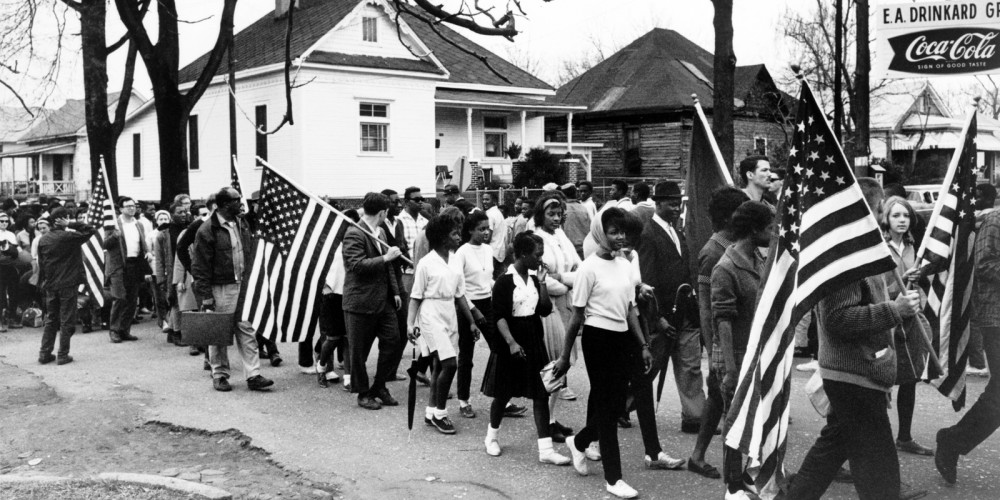
Civil rights march from Selma to Montgomery, Alabama in 1965. Library of Congress.
We are the heirs of our history. Our communities, our politics, our culture: it is all a product of the past. As William Faulkner wrote, “The past is never dead. It’s not even past.”1 To understand who we are, we must therefore understand our history.
But what is history? What does it mean to study the past? History can never be the simple memorizing of names and dates (how would we even know what names and dates are worth studying?). It is too complex a task and too dynamic a process to be reduced to that. It must be something more because, in a sense, it is we who give life to the past. Historians ask historical questions, weigh evidence from primary sources (material produced in the era under study), grapple with rival interpretations, and argue for their conclusions. History, then, is our ongoing conversation about the past.
Every generation must write its own history. Old conclusions—say, about the motives of European explorers or the realities of life on slave plantations—fall before new evidence and new outlooks. Names of leaders and dates of events may not change, but the weight we give them and the context with which we frame them invariably evolves. History is a conversation between the past and the present. To understand a global society, we must explore a history of transnational forces. To understand the lived experiences of ordinary Americans, we must look beyond the elites who framed older textbooks and listen to the poor and disadvantaged from all generations.
But why study history in the first place? History can cultivate essential and relevant—or, in more utilitarian terms, “marketable”—skills: careful reading, creative thinking, and clear communication. Many are familiar with a famous quote of philosopher George Santayana: “Those who fail to learn from history are doomed to repeat it.”2 The role of history in shaping current events is more complicated than this quote implies, but Santayana was right in arguing that history offers important lessons. The historical sensibility yields perspective and context and broader awareness. It liberates us from our narrow experiences and pulls us into, in the words of historian Peter Stearns, “the laboratory of human experience.”3 Perhaps a better way to articulate the importance of studying history would be, “Those who fail to understand their history will fail to understand themselves.”
Historical interpretation is never wholly subjective: it requires method, rigor, and perspective. The open nature of historical discourse does not mean that all arguments—and certainly not all “opinions”—about the past are equally valid. Some are simply wrong. And yet good historical questions will not always have easy answers. Asking “When did Christopher Columbus first sail across the Atlantic?” will tell us far less than “What inspired Columbus to attempt his voyage?” or “How did Native Americans interpret the arrival of Europeans?” Crafting answers to these questions reveals far greater insights into our history.
But how can any textbook encapsulate American history? Should it organize around certain themes or surrender to the impossibility of synthesis and retreat toward generality? In the oft-cited lines of the American poet Walt Whitman, we found as good an organizing principle as any other: “I too am not a bit tamed—I too am untranslatable,” he wrote, “I sound my barbaric yawp over the roofs of the world.”4 Long before Whitman and long after, Americans have sung something collectively amid the deafening roar of their many individual voices. Here we find both chorus and cacophony together, as one. This textbook, therefore, offers the story of that barbaric, untranslatable American yawp by constructing a coherent and accessible narrative from all the best of recent historical scholarship. Without losing sight of politics and power, it incorporates transnational perspectives, integrates diverse voices, recovers narratives of resistance, and explores the complex process of cultural creation. It looks for America in crowded slave cabins, bustling markets, congested tenements, and marbled halls. It navigates between maternity wards, prisons, streets, bars, and boardrooms. Whitman’s America, like ours, cut across the narrow boundaries that can strangle narratives of American history.
Joseph Locke & Ben Wright.
